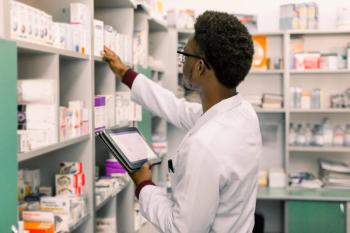
Take a Cue from Your Queues!
Queueing theory can help pharmacy managers control lines, wait times, and staffing issues.
At least once each day, an overwhelming queue forms in a pharmacy. Patients stare us down as we prepare their orders. Computer work snowballs. Phone calls never end. Inevitably the stress and frustration leaves staff members thinking “We aren’t McDonald’s!” While this is true, many pharmacies can learn something about efficient service from the fast food industry.
Many of us understand that improvements in operational efficiency can enhance patient satisfaction, reduce staff stress levels, improve quality, and most importantly, free up time for patient-care activities. Historically, I’ve tweaked workflows in an iterative manner to find an optimal staffing arrangement. However, the fast food industry routinely uses an analytical model called “queueing theory” to help solve such problems in an easy, objective way.
Queueing Theory Explained
Queueing theory is a mathematical model that can provide an objective description of a queue based on easy-to-collect information. For a given time interval, we begin by quantifying the average number of queue arrivals (people forming a line, workflow steps entering a queue, etc.), the number of staff members serving the queue, and the staff members’ average service rate.
Then, we can use one of many free online queueing theory calculators to compute the average length of a queue, the average time that will be spent in the queue, or the fraction of the time interval that staff will spend actively serving the queue. By rerunning the model using different inputs – namely, service rates and number of staff – we can better understand how each modification might impact service without subjecting staff and patients to prolonged periods of trial and error.
Queueing Theory Applied
Here’s an example.
Pharmacy manager Joel recognizes that the length of the pharmacy’s pickup line in the early evening results in patient frustration and staff burnout. Further, he feels that staff stress levels may be contributing to errors during prescription processing. Joel hopes to leverage an analytical model to understand and improve the efficiency of his pharmacy pickup line from 4 pm to 5 pm.
Joel guesses that each transaction takes approximately 3 minutes, meaning each staff member’s service rate is 20 transactions per hour. Over the past year, the point-of-sale (POS) system indicates that an average of 30 total transactions are completed by the two POS-assigned technicians during the 1-hour period being evaluated. Entering this information into a queueing theory calculator, Joel learns that his pharmacy can expect an average of 1.93 people in line and an average wait time of 231 seconds between 4 pm and 5 pm.
Joel then explores two options for improving line service. First, he considers adding an additional staff member to POS duty from 4 pm to 5 pm. As a second option, Joel feels that he may be able to revise the POS process and reduce the average POS transaction time to 2 minutes. Using the new inputs Joel reruns the model for each option. The results are summarized in Table 1.
After reviewing the data, Joel decides that the results from option two are acceptable and he will pursue this route before reallocating additional staff to the POS terminals.
Conclusion
By leveraging tools which have been successfully used to improve operations in other industries, pharmacists can adopt a methodical approach to improving patient care and service. So, the next time you have a patient staring at you while the phone won’t stop ringing, it may be a sign that you should try using a queueing theory calculator to re-evaluate and improve your workflow.
The views expressed are the author’s personal views, and do not necessarily reflect the policy or position of Mayo Clinic.
Bryan Buechel, PharmD, is a Senior Pharmacy Manager at Mayo Clinic in Rochester, MN. He can be reached on LinkedIn or Twitter (@BuechelBryan).
Newsletter
Pharmacy practice is always changing. Stay ahead of the curve with the Drug Topics newsletter and get the latest drug information, industry trends, and patient care tips.





























































































































